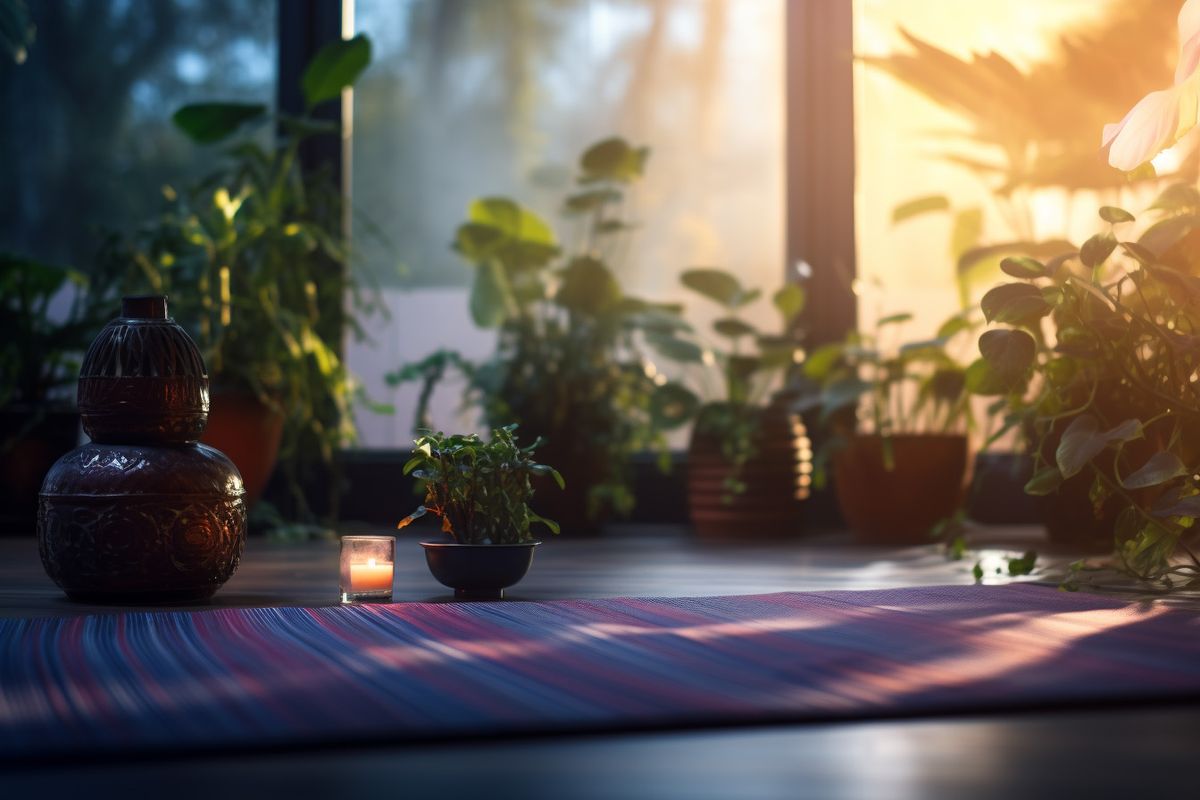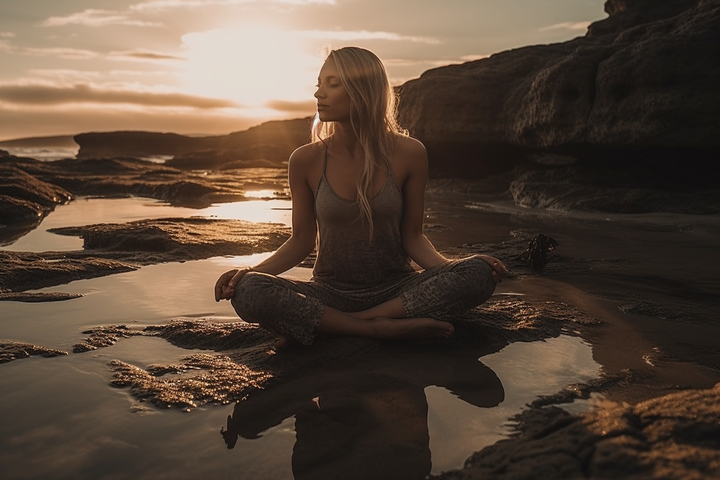The Ultimate Guide to Easy Pose (Sukhasana) in Yoga
Easy Pose gently stretches the hips, thighs, and ankles, aiding in improved flexibility over time.

Introduction: What is Easy Pose (Sukhasana)?
Easy Pose, also known as Sukhasana, is a foundational seated posture often practiced in yoga. Despite its seemingly simple appearance, this ancient pose packs a multitude of physical and mental benefits.
Ideal for meditation, deep breathing exercises, and as a starting position for many other asanas, Easy Pose is an integral part of yoga practice.
This comprehensive guide will walk you through the history, physical and mental benefits, and step-by-step instructions for mastering this fundamental pose.
Historical Background of Easy Pose
Yoga has been a part of human history for thousands of years, tracing back to ancient civilizations in India.
Sukhasana derives its name from the Sanskrit language, where "Sukha" translates to 'ease,' 'comfort,' or 'pleasure,' and "Asana" refers to 'pose' or 'seat.'
This traditional sitting pose has been documented in classical yoga scriptures, including the Hatha Yoga Pradipika and the Yoga Sutras of Patanjali. In these texts, the pose is often associated with meditation and pranayama (breath control) practices.
Cultural and Spiritual Resonance
Beyond its origin in ancient India, Sukhasana holds a transcultural place of significance. It is commonly found in Buddhist meditative practices as well as in various religious and spiritual ceremonies around the world. The pose's simplistic, grounding nature makes it an emblematic figure for introspection, devotion, and mental clarity across different cultural spectrums.
From Yogis to Modern Practitioners
Traditionally, yogis practiced Sukhasana not just for its physical benefits, but also for its ability to prepare the body and mind for deep meditation.
The straightforwardness and ease of the pose made it accessible for individuals of all ages and physical conditions. Today, it retains its universality and is a staple in both beginner and advanced yoga classes, workshops, and mindfulness programs globally.
Adaptations Over Time
While the core essence of Sukhasana has remained the same, it has seen various adaptations and interpretations over the years.
Modern yoga styles may incorporate props like cushions or blankets to make the pose more comfortable or accessible. Similarly, the pose is often customized to meet individual needs, such as those with back issues or limited flexibility.
Iconic Representation in Art and Media
The image of a person seated in Easy Pose is iconic and often used in art and media to represent a state of calm, meditation, or Eastern spirituality.
From ancient sculptures to modern digital graphics, the portrayal of this asana transcends time and medium, symbolizing universal themes of peace, stability, and inner harmony.
Physical Benefits of Practicing Easy Pose
Often mistaken for just a simple sitting position, Easy Pose offers a range of physical benefits that extend far beyond its straightforward appearance. Practicing this asana regularly can improve various aspects of your physical health, making it an essential part of a balanced yoga routine.
Improved Posture and Spinal Alignment
Sukhasana encourages you to sit upright, aligning your head, neck, and spine in a straight line. This helps in correcting poor posture by training your body to maintain this aligned position. Over time, the regular practice of Easy Pose can contribute to a more balanced posture, reducing the likelihood of backaches and muscular tension commonly linked to slouching.
Enhanced Flexibility and Joint Health
Easy Pose gently stretches the hips, thighs, and ankles, aiding in improved flexibility over time. As you sit cross-legged, the natural opening of the hips gradually loosens tight muscles, benefiting not just the hip joints but also aiding in easier execution of other yoga poses that require hip flexibility.
This is particularly beneficial for people who have sedentary jobs and experience stiffness in their lower body.
Increased Blood Circulation
Sitting upright in Easy Pose facilitates better blood flow throughout the body, particularly in the spine and pelvis area. Improved circulation can lead to enhanced bodily functions, reduced fatigue, and a more effective detoxification process.
Lower Stress Levels and Cortisol Reduction
Although it may not appear strenuous, Easy Pose offers a gentle but effective way to encourage deep breathing. The diaphragmatic breathing associated with this pose helps in reducing cortisol levels in the body, which is the hormone responsible for stress.
Reduced cortisol levels lead to a more relaxed state, which in turn benefits your physical health by lowering blood pressure and reducing inflammation.
Strengthening Core Muscles
Maintaining an erect posture in Sukhasana requires engagement of the abdominal muscles. Over time, this can contribute to a stronger core, which is essential for overall stability and can help protect the lower back from injury.
Reduced Strain on the Knees
For individuals who find it challenging to sit in more complex seated positions like Padmasana (Lotus Pose), Easy Pose offers a less strenuous alternative.
The pose reduces the amount of torque on the knees, making it a more accessible option for people with knee issues or those who are new to yoga.
Improved Posture
Easy Pose encourages upright posture, which aids in the natural alignment of the spine, neck, and shoulders.
Enhanced Flexibility
Regularly practicing Sukhasana helps in loosening the hips and lower back, gradually improving flexibility.
Lower Stress Levels
The pose's gentle nature allows for deep breathing, which reduces cortisol levels and induces relaxation.
Step-by-Step Instructions for Easy Pose
Step 1: Select a Quiet Space
Choose a location where you won't be disturbed to set the stage for a more focused practice.
Step 2: Place a Yoga Mat or Blanket
Lay down a yoga mat or a soft blanket on the floor to provide a comfortable, non-slip surface.
Step 3: Begin in a Seated Position
Sit down on the yoga mat with your legs stretched out in front of you.
Step 4: Cross Your Legs
Gently cross your legs at the shins, bringing each foot under the opposite knee. Your knees should be wide apart.
Step 5: Align Your Spine
Ensure your spine is aligned vertically with your head and neck. Aim to sit tall, lifting your spine towards the ceiling while keeping your shoulders relaxed.
Step 6: Position Your Hands
Place your hands on your knees or thighs, palms facing up or down, depending on your comfort level. Some people prefer to form a mudra by connecting the thumb and index finger.
Step 7: Focus on Your Breathing
Close your eyes if you find it comfortable and turn your attention to your breath. Inhale deeply through the nose, expanding the diaphragm, and exhale fully, either through the nose or mouth.
Step 8: Engage Your Core
Slightly engage your abdominal muscles to support your spine, but avoid tensing up. This will help maintain good posture and balance.
Step 9: Hold the Pose
Aim to hold the pose for at least a few minutes to start. You can increase the duration as you become more comfortable. During this time, maintain your focus on your breathing and posture.
Step 10: Release the Pose
To come out of the pose, uncross your legs and stretch them out in front of you for a few moments. Shake them gently to release any tension.
Step 11: Take a Moment to Reflect
Sit quietly for a moment, taking some deep breaths and reflecting on the experience of the pose and any sensations you felt during the practice.
Common Mistakes to Avoid in Easy Pose
Rounded Back and Slumped Shoulders
One of the most frequent mistakes is rounding the back and letting the shoulders slump forward. This defeats the purpose of the pose, which aims to improve posture and spinal alignment.
How to Avoid
Engage your core muscles and imagine a string pulling you up from the crown of your head. Keep your shoulders relaxed but rolled back slightly to open up the chest.
Incorrect Hand Placement
Improper hand placement can lead to tension in the shoulders and neck. Some people unconsciously lift their shoulders when placing their hands on their knees.
How to Avoid
Place your hands softly on your knees or thighs, keeping the shoulders relaxed. Whether palms are facing up or down, the key is to maintain a natural, stress-free position.
Shallow Breathing
Another common mistake is shallow or rapid breathing, which negates the calming and balancing effects of Easy Pose.
How to Avoid
Focus on deep diaphragmatic breathing. Inhale deeply through your nose, allowing your abdomen to expand, and exhale fully through your nose or mouth. This enhances the calming benefits and aids in stress reduction.
Crossing Legs Too Tightly
Over-enthusiastic beginners sometimes cross their legs too tightly, thinking it will provide more stability. This can cause unnecessary strain on the hips and knees.
How to Avoid
Keep a gentle but firm crossing of the legs at the shins or ankles. Your knees should be wide apart, allowing the feet to slide comfortably beneath the opposite knees.
Holding Tension in the Face or Jaw
It's easy to hold unconscious tension in the face or jaw, which can hinder the relaxation benefits of the pose.
How to Avoid
Be mindful of releasing any tension in your face, jaw, or eyes. Some practitioners find it helpful to do a quick scan from the head down to identify and release tension.
Complementary Poses to Easy Pose
When practicing Easy Pose, there are various complementary asanas that can be integrated into your yoga routine to maximize benefits. These poses can further enhance your flexibility, focus, and overall wellbeing.
Child's Pose (Balasana)
Child's Pose is an excellent follow-up or preparatory pose for Easy Pose. It provides a deep stretch to the back and serves as a resting pose to reconnect with your breath.
How to Incorporate
Perform Child’s Pose after exiting Easy Pose to gently stretch your back muscles and provide a counter-stretch to your spine.
Cat-Cow Pose (Marjaiasana-Bitilasana)
This combination of two poses is excellent for warming up the spine and preparing your body for seated poses like Sukhasana.
How to Incorporate
Include Cat-Cow in your warm-up sequence to prepare the spine for the upright, aligned posture required in Easy Pose.
Mountain Pose (Tadasana)
Mountain Pose teaches the fundamentals of alignment and grounding, making it a beneficial companion to Easy Pose.
How to Incorporate
Stand in Mountain Pose to focus on proper alignment and grounding before transitioning into Easy Pose. This can help you maintain proper posture while seated.
Seated Forward Bend (Paschimottanasana)
This pose can follow Easy Pose to provide a deep stretch to the entire backside of the body, from the calves up through the spine.
How to Incorporate
Perform Seated Forward Bend after Easy Pose to elongate the spine and stretch the legs, making it easier to maintain the cross-legged position in Sukhasana.
Corpse Pose (Savasana)
A yoga practice often concludes with Corpse Pose, making it a natural complement to almost any yoga sequence.
How to Incorporate
After exiting Easy Pose, lie down in Corpse Pose to relax and absorb the benefits of your practice, sealing in the mental calmness and physical openness you've achieved.
Conclusion: Incorporating Easy Pose into Your Routine
Mastering Easy Pose is more than just learning a new yoga posture—it’s a journey towards physical wellness and mental clarity. Incorporate this ancient, yet versatile, asana into your daily routine to experience a holistic range of benefits.



Comments ()